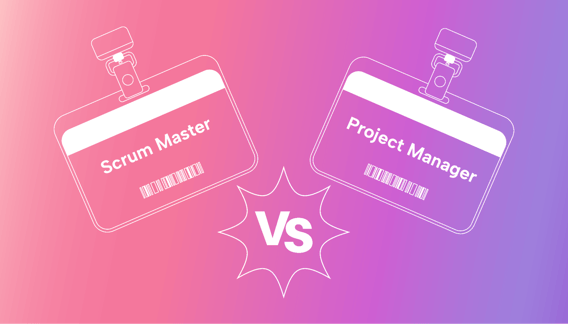Simply put: Project managers and Scrum Masters are project leadership roles. But they're not two peas in a project management pod. They're very different in how they do it and the techniques they employ to achieve project success.
Wondering which role would benefit your organization? For an answer, first, you need to understand their differences.
In this article, we'll dive deep into the Scrum Master and project manager roles, what they do, and how they go about it. Plus, we'll show you how AI can optimize project management activities no matter the approach.
What does a Scrum Master do?
Within a Scrum team, the Scrum Master is the guardian of Scrum (Agile methodology), which means they make sure:
- There's clear communication between the leadership and the project team.
- The team plays by Scrum rules, including transparency, inspection, and adaptation.
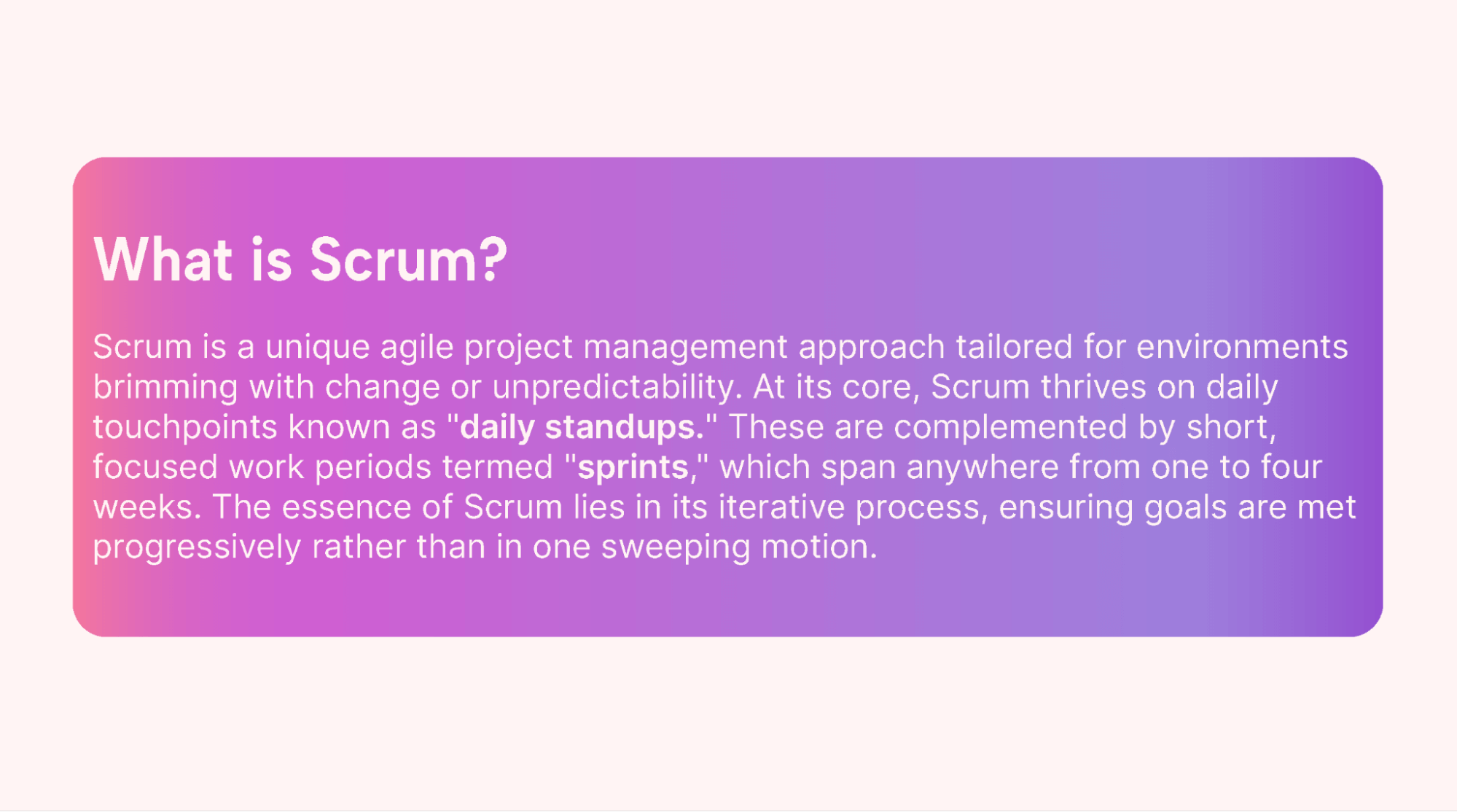 |
Let's see what a Scrum Master does on a day-to-day basis:
- Facilitate Scrum events: This includes sprint planning, the daily stand-up, sprint review, and the sprint retrospective. It's all about keeping the team on track and aligned.
- Coach the team: A Scrum Master ensures the team understands and lives by Scrum principles.
- Remove roadblocks: If the team faces any roadblocks, the Scrum Master is on it to ensure progress doesn't stop.
- Shields the team: External interference? Distractions? Not on the Scrum Master's watch. The team can focus on what's essential (development work).
- Promote continuous improvement: The Scrum Master fosters a culture of continuous learning and improvement.
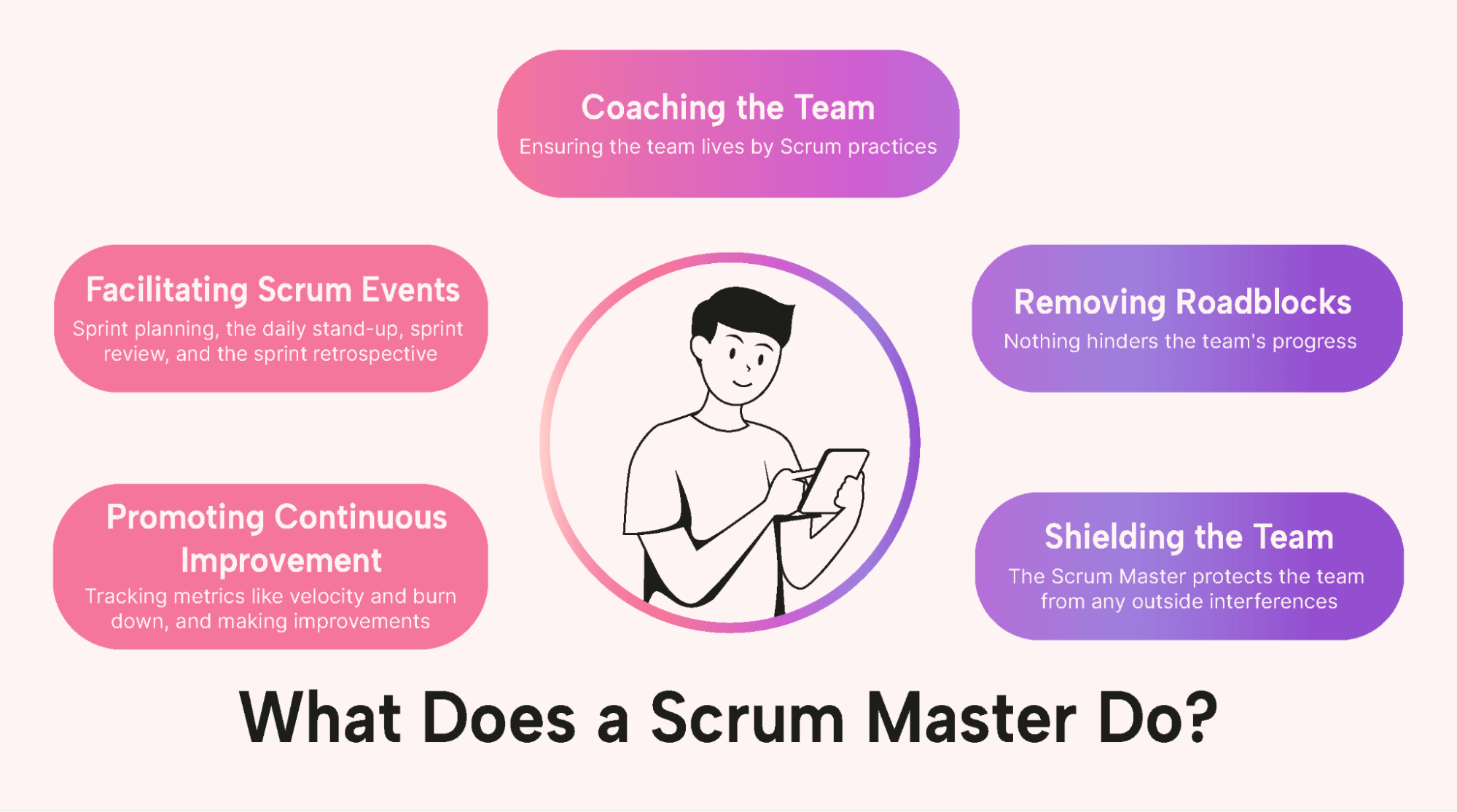 |
What does a project manager do?
A project manager's remit is the entire project, not just the development (building) piece. They ensure everyone and everything, including the timelines, budget, and tasks, stay on track throughout the entire project lifecycle.
Here’s what a project manager does daily:
- Project planning: Outlining the project scope, objectives, and deliverables.
- Budget management: Ensuring the project stays within a set budget.
- Team coordination: Making sure everyone is pulling in the same direction.
- Risk management: Identifying potential risks and their remedies before disaster strikes.
- Stakeholder communication: Keeping stakeholders in the loop regarding project progress and changes.
- Quality control: Guaranteeing the project deliverables meet the set standards.
- Closure and review: Wrapping up the project, analyzing what worked and what didn't after success.
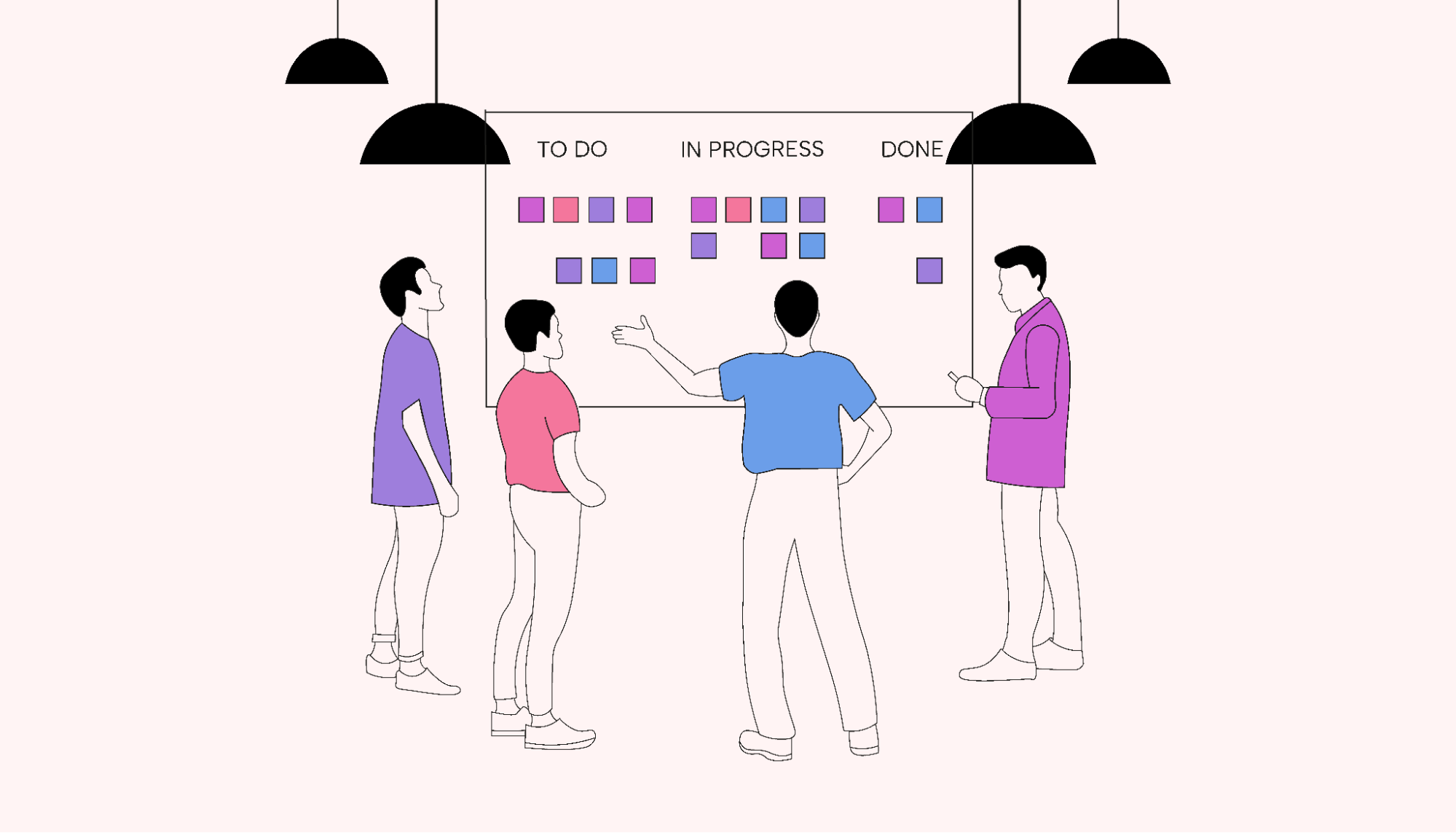 |
What is the difference between a Scrum Master and a project manager?
Here are the key distinctions between the two roles:
Responsibilities: Facilitation vs. planning
The Scrum Master focuses on the Scrum team. They push team members to give their best while enforcing Scrum principles.
How? By facilitating collaboration and self-organization among the team. Scrum Masters remove obstacles so the team can work as efficiently as possible.
On the other hand, project managers take a more holistic tack and ensure everyone sticks to the blueprint. This means they're responsible for planning and controlling the project scope, schedule, and budget.
Approach: Agile vs. traditional methodology
Heard of Agile? That's Scrum Master’s playground. They operate exclusively within an Agile framework that embraces change and feedback.
The project manager? They can operate in any type of project while employing any methodology depending on the project’s nature, such as waterfall, Agile, or Kanban.
Role: Coach vs. authority
A Scrum Master has a coaching (or servant leader) relationship with the team. They mentor and motivate the team to foster growth.
The project manager, on the other hand, takes more of an upper-management approach to authority, calling important shots for the team.
Leadership style: Empowerment vs. decision-making
The Scrum Master believes in the power of the team, empowering them to make decisions and take ownership of their work.
On the flip side, the project manager holds the power to make important decisions and assign tasks to teams so that everyone knows their role.
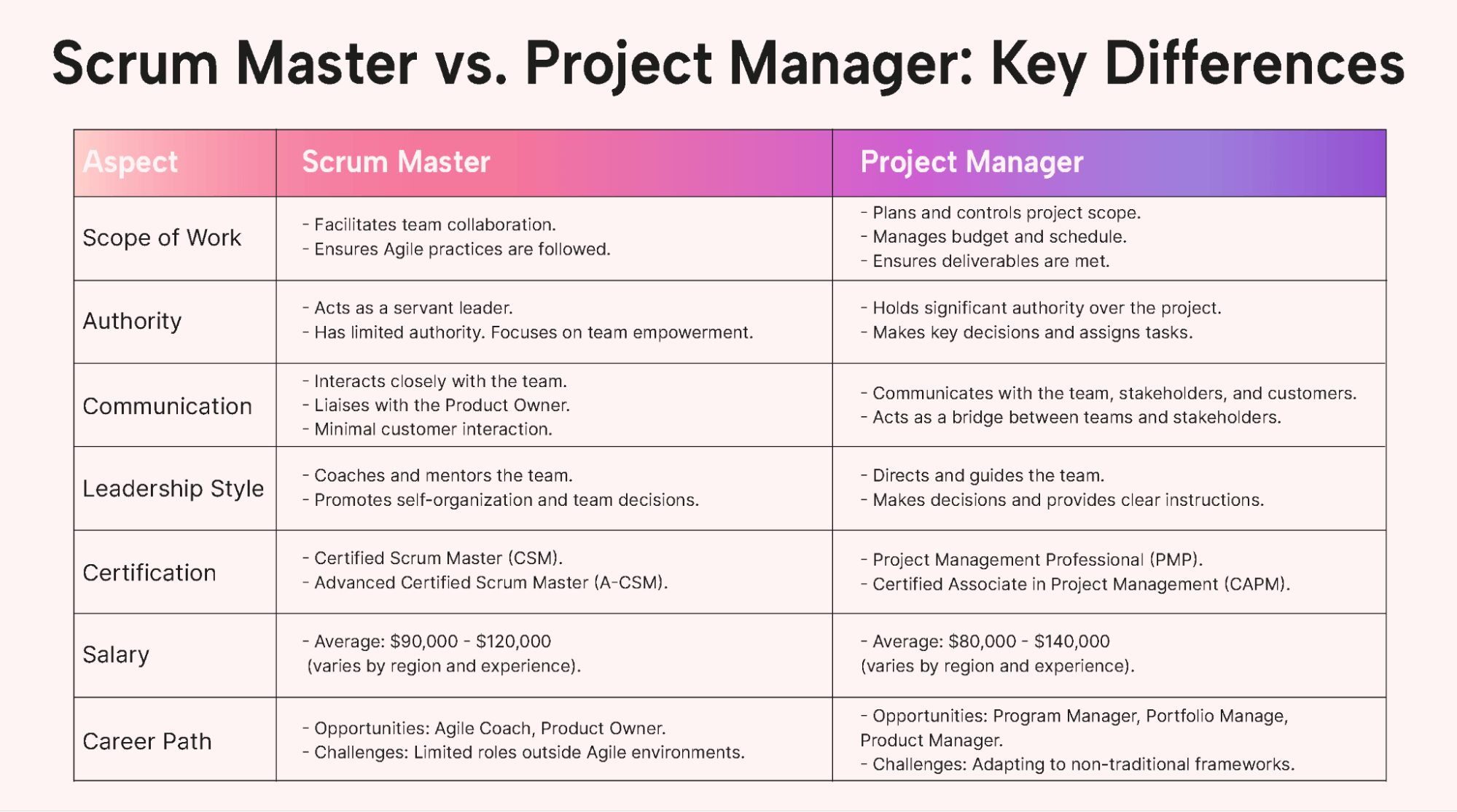 |
Scrum Masters vs. project managers: Which one is right for you?
That's a tough one. To make a choice, consider these five key factors:
- The project’s type, size, complexity, and scope.
- Your organization's culture, structure, and goals.
- The stakeholders’ preferences, expectations, and feedback.
- Your team members’ availability, skills, and experience.
- Market type, predictability, volatility, and customer behavior.
Here’s a visual breakdown of how to choose the right approach:
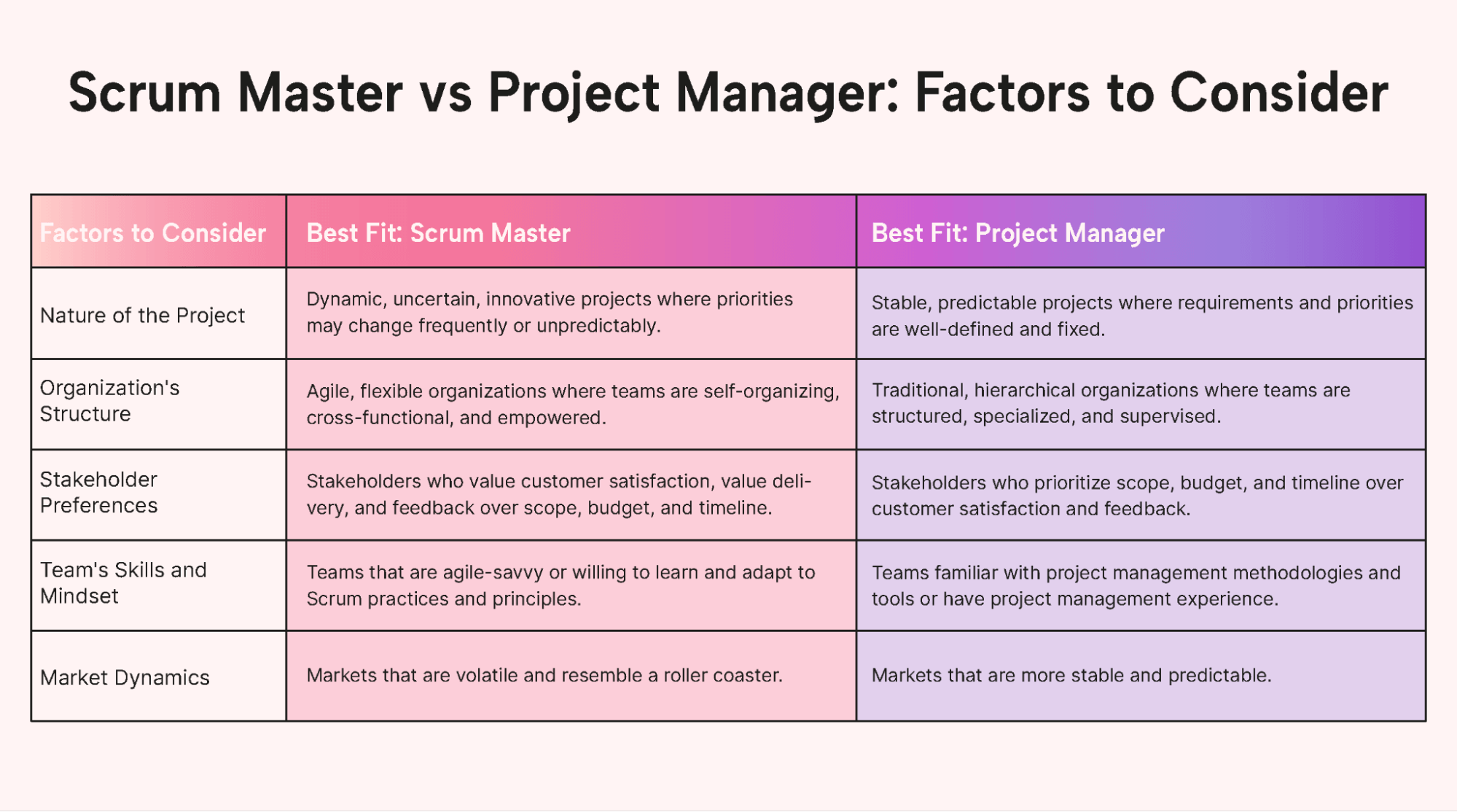 |
When to opt for a Scrum Master:
- Dynamic projects: Change is a Scrum Master's comfort zone. So they're ideal for dynamic and innovative projects with shifting priorities.
- Flexible organizations: A Scrum Master is perfect if your teams are self-organizing, cross-functional, and decision-makers.
- Stakeholder preferences: Do your stakeholders prioritize customer satisfaction, value delivery, and feedback over details associated with scope, budget, and timeline? Pick Scrum Master!
- Team dynamics: Got a team that's self-motivated, resourceful, and values collaboration? A Scrum Master will guide them through the agile practices.
When to opt for a project manager:
- Complex projects: Do you deal with complex projects with strict deadlines, multiple stakeholders, and high resource demands? You need a project manager for thorough planning and smooth project operations.
- Stakeholder preferences: Many stakeholders value scope, budget, coordination, and timeline. That's pretty much everything a project manager manages.
- Stable market: Operating in a stable market with predictable customer needs? Since a project manager is all about planning, predictability sounds right up their alley. They can plan projects with better accuracy, risk management, and resource allocation.
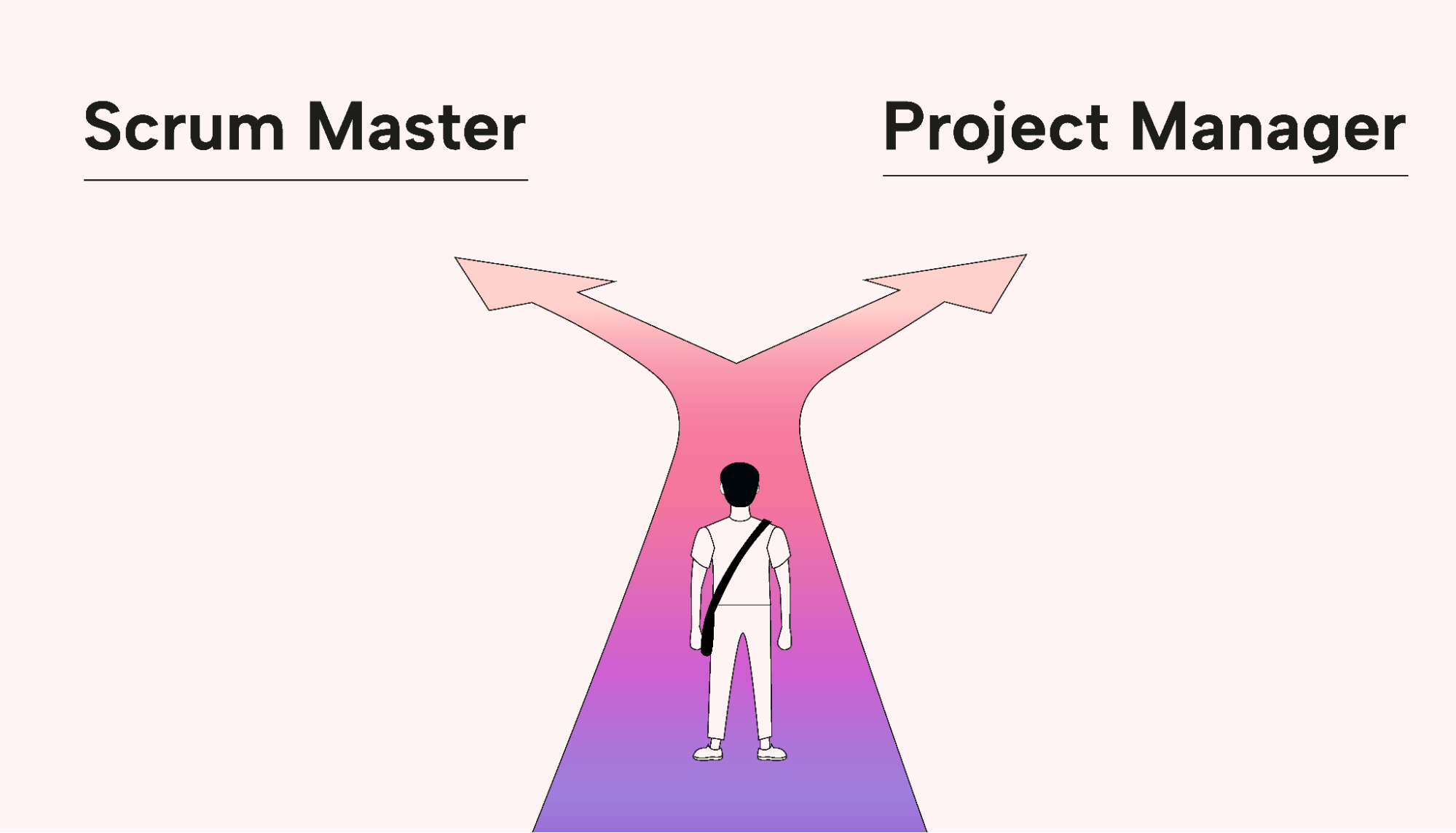 |
Example of Scrum Master vs. project manager approaches in a project
Let's use an example to see how a Scrum Master and project manager would do things.
Project Description: Motif is a small technology consulting shop working with a mid-sized retail company to update its customer-facing technology. The goal is to launch a new e-commerce platform that's user-friendly, mobile-responsive, and integrated with the company's inventory management system.
How does a Scrum Master tackle it?
1. Facilitating collaboration:
First, Motif would organize a cross-functional development team, including Motif designers, testers, and operational resources from the retail company. The Scrum framework requires close collaboration.
2. Feedback loop: E-commerce trends are dynamic with changing consumer behavior and advanced technology. Motif's Scrum Master will incorporate feedback from beta testers and early users in Sprint reviews and retrospectives.
3. Coaching: The Scrum Master will guide and coach the development team throughout the Scrum life cycle and hold regular sprint retrospectives to reflect on the work done and work that needs improvement.
4. Empowering the team: The Scrum Master will enable the team to take on and do the work for each Sprint themselves to promote ownership and accountability.
How does a project manager tackle it?
- Planning: Motif's project manager will begin with a detailed project plan for the e-commerce platform. It'll contain every step from design to deployment, resource allocation, to a detailed schedule.
- Controlling scope: Unlike Scrum, change requests would go through a formal change management process.
- Decision-making: The project manager will assign tasks to team members, carefully track progress against the planned schedule, watch the budget, and make the call on any in-flight decisions.
- Risk management: The project manager will identify potential risks (like third-party integration, usability, or technical issues) upfront and have contingency plans.
Key differences
- The Scrum Master is all for change, whereas the project manager controls and limits them.
- The Scrum Master doesn't assign tasks. Instead, they facilitate self-organization. The project manager, on the other hand, assigns all project tasks and roles.
- The Scrum Master doesn't assign tasks. Instead, they facilitate self-organization throughout the Scrum process. The project manager, on the other hand, assigns all project tasks and roles.
- The Scrum manager works in iterative sprints, whereas the project manager follows a detailed plan.
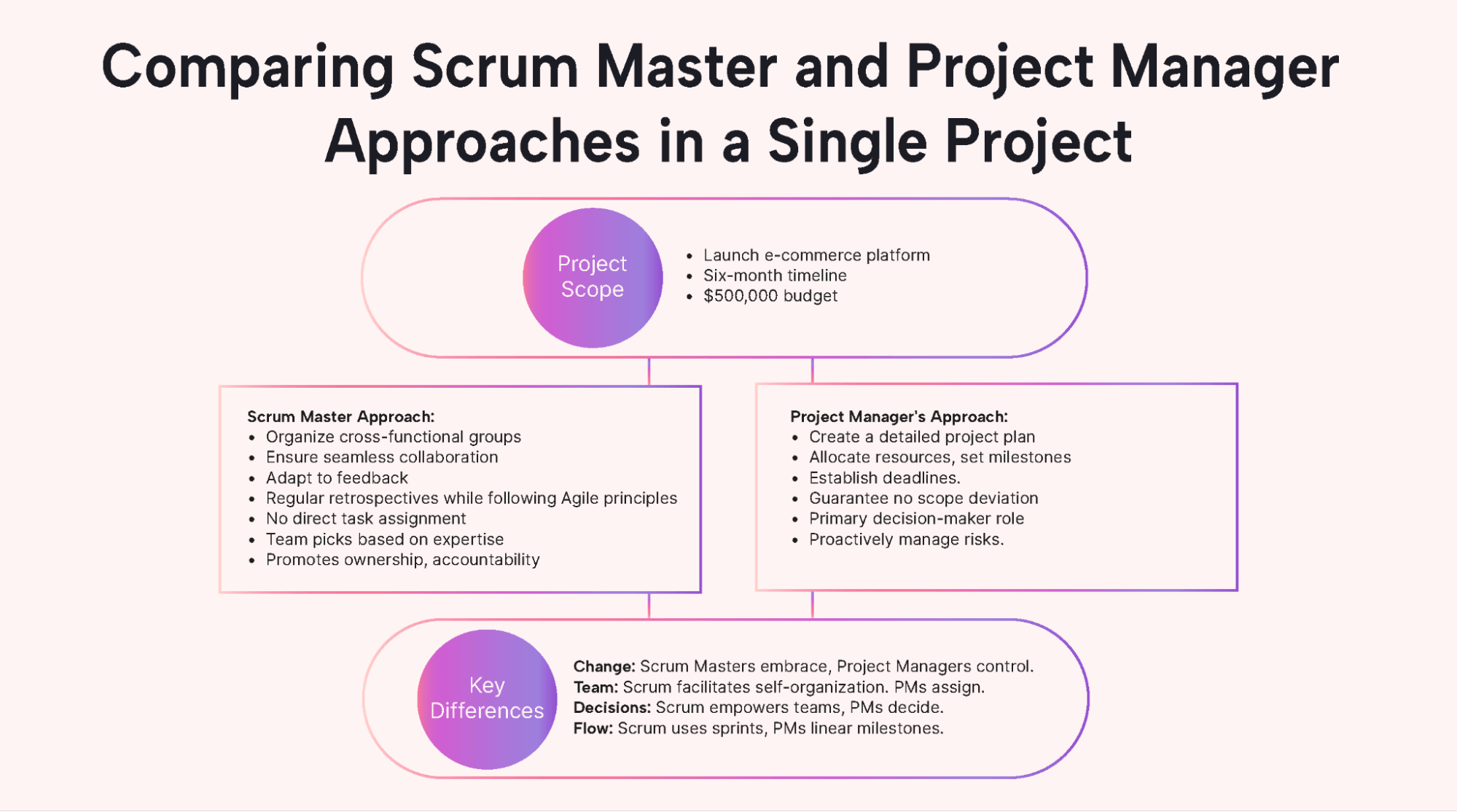 |
How you can use AI to enhance the roles of Scrum Masters and project managers
According to the 2023 Project Management Institute (PMI) Annual Global Survey on Project Management, 21% of respondents reported using AI consistently or often in their project management practices. The rest? They believe AI will be used in some capacity at all times for project management!
Here's why:
AI isn't a one-trick pony. It can help Scrum Masters and project managers by relieving the load of repetitive work and handling simple jobs like scheduling and providing reminders. It can also perform complex scheduling and automated rescheduling.
Let’s look at some advantages:
Collaboration and task automation
AI can summarize your meeting discussions, so your team can concentrate on important meeting ideas. What's more? AI-powered project planning tools can help you manage tasks and collaborate on projects.
And that’s just the tip of the iceberg.
AI makes collaboration easy by automating and centralizing your calendar, scheduling, progress tracking, and task-assigning needs. It even notifies you and your stakeholders (if you want) when you hit a milestone to maintain transparency.
Project and resource planning
Let's be honest: Manual project management can be confusing and full of errors.
It's a good thing planning is no big deal for AI-powered solutions like Motion.
Its powerful AI helps create project timelines, changes tasks on the go, suggests the best resource allocation strategies, and alerts you to potential delays, thus cutting out a lot of manual scheduling.
Predictive analytics
Predictive analytics can crunch large amounts of data in short order and predict outcomes based on patterns. It's tricky stuff, but not for AI. This way, you get a sneak peek into potential roadblocks, patterns, trends, risks, and task delays before they happen.
What does this mean for you?
You can take preventive steps before issues blow up.
 |
Scrum Masters vs. project managers: Final thoughts
So the main question is: Should you choose the Agile superhero or the expert project choreographer?
By understanding the differences between a Scrum Master and a project manager, you can identify what might work best for your projects.
And then, you'll want to incorporate an AI solution like Motion.
It's everything Scrum Masters and project managers need to automate task scheduling and track progress.
The Motion AI also can find meeting times that accommodate everyone's calendars so there's more time to focus on leadership, coaching, and strategic activities.
Ready to try Motion for free now?

